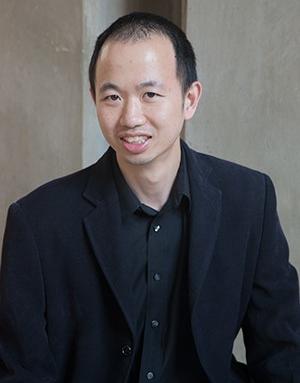Dr. Ken Lau, a CSBC Investigator and Assistant Professor at Vanderbilt University, integrates computational approaches with single cell technologies to understand the function of epithelial tissue.
As an undergraduate student, he was interested in using his programming skills for something beyond a traditional career in computer science. In the early 2000s, he became the first person to join a new Bioinformatics graduate program at the University of Toronto.
Although computational biology wasn’t an established field at the time, Dr. Lau wanted to try something new and use computational sciences to understand biological systems. He later went on to do a post-doctoral fellowship in systems biology under the co-mentorship of Dr. Kevin Haigis and Dr. Doug Lauffenburger. He studied signal transduction and gained experience in developmental biology at Harvard Medical School and MIT.
In this interview, he describes his views on training in systems biology, career experiences in cancer systems biology, and his current research investigating the role of cell lineage in cancer.
What are advantages of training in systems biology?
Now, more and more biological data is generated from new technologies. Training in systems biology is helpful because we, in this field, are very comfortable in the management and analysis of data. There’s a growing demand for this skill set in terms of data-driven science.
What are positive aspects and challenges during the transition to independent investigator in cancer systems biology?
A positive aspect of the field as a junior investigator is that you get to interact and collaborate with high-profile, established scientists.
The nature of systems biology is multi-disciplinary and a team effort. It’s bringing together math, physics, experimental technologies, cancer biology, and modelers. This is great because team science is the way that science will be done in the future.
A challenge as a new, independent investigator is that academic institutions are often focused on R01 grants. Even though a new investigator in cancer systems biology may be working with other scientists and supported as part of a U54 team grant, it’s easier for academic leaders to see the individual research contributions of an investigator doing an independent project in his/her own lab. However, the pros outweigh the cons, and the team-based systems biology approach allows me to do better science.
In a study, you introduced the p-Creode algorithm. Can you describe this approach?
With populational analysis, you assume different cell populations are distinct entities. Yet, with single-cell data, you can get a continuum of cell states for building maps of transitional trajectories. Our algorithm (described in a Cell Systems study) is a state-based approach that hierarchically builds graphs to show how cell state transition occurs.
When we were developing it, we wanted to leverage the non-deterministic elements of cell state transitions, especially in cancer. In other words, we wanted our model to incorporate the probabilities of cellular transitions in heterogenous tumors.
With the p-Creode program, we generate an ensemble of multiple maps predicting cell transition states from a given data set. Then, we quantitatively score the similarity of different maps in the ensemble to determine the probabilistic nature of cell transitions occurring in cancer.
Why do you study the intestinal epithelium and cell differentiation?
For me, the intestinal epithelium is beautiful. Systems biologists will tell you that we love patterns. In the intestinal epithelium, you can see repeating pattern of crypts and villi. It’s beautiful to look at and everything is very organized.
My lab focuses on cell lineage, which relates to the bigger question of tissue heterogeneity. From a systems perspective, the function of an organ is the integrated combination of different functional cell types. Cancer can be viewed as an abnormal organ with its own level of organization. It’s important to understand how different cells originate that contribute to the behavior of a normal or cancerous tissue.
How will your research translate into cancer therapies?
Taking a systems biology point of view, ablating a single cell population or targeting a certain pathway for a cancer treatment is not enough to cure the disease. There is robustness and adaptation in the system. If you get rid of one population of cells, others could possibly transition to this state.
We are working to understand the basic principles of cell state transitions so that we can potentially target cell state transitions rather than a specific cell population. This could lead to long-term therapeutic benefits by inhibiting deleterious cancer cell states.
